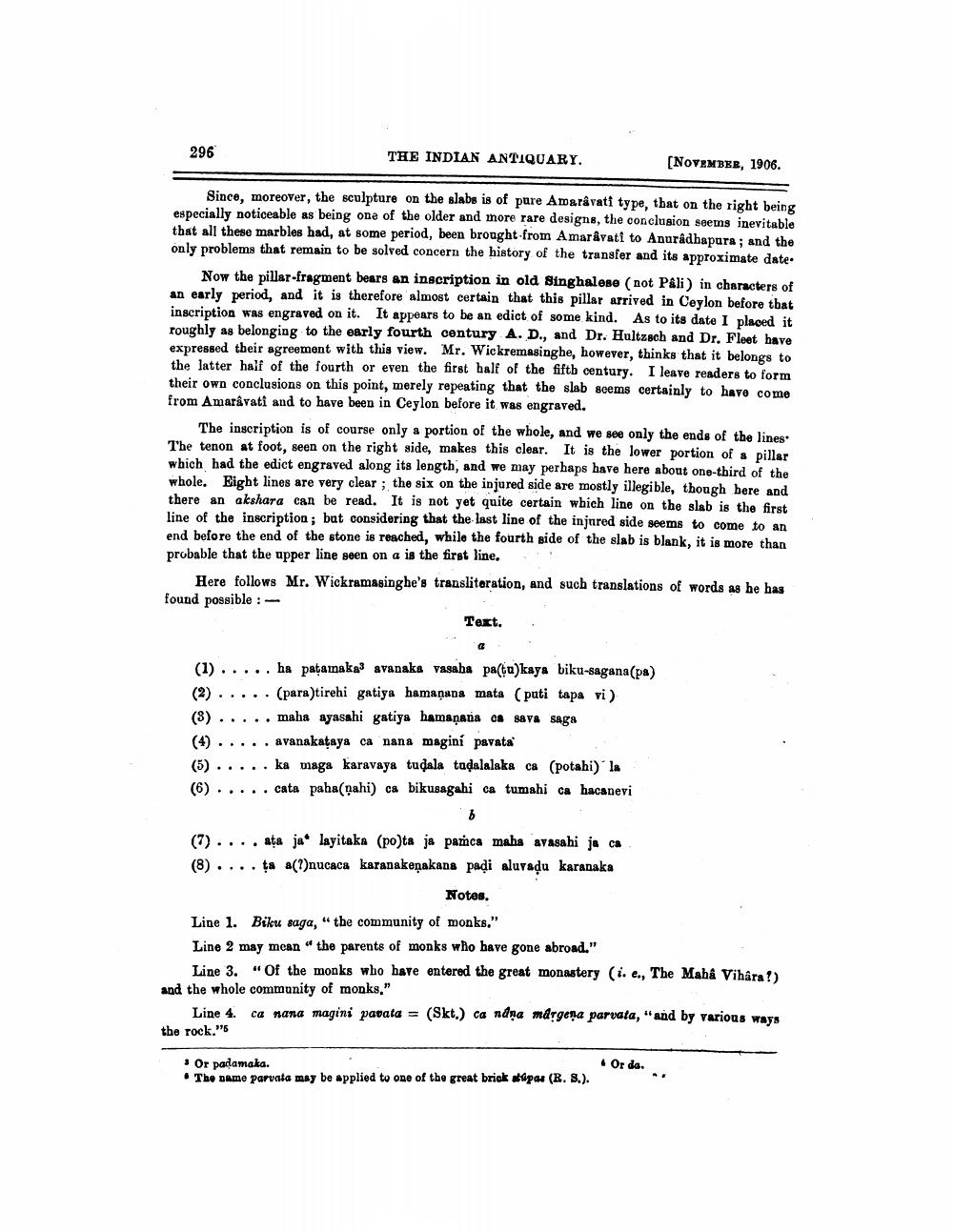________________
296
THE INDIAN ANTIQUARY.
(NOVEMBER, 1906.
Since, moreover, the sculpture on the slabs is of pure Amaravati type, that on the right being especially noticeable as being one of the older and more rare designs, the conclusion seems inevitable that all these marbles had, at some period, been brought from Amaravati to Anuradhapura ; and the only problems that remain to be solved concern the history of the transfer and its approximate date
Now the pillar-fragment bears an inscription in old Singhalese (not Pali) in characters of an early period, and it is therefore almost certain that this pillar arrived in Ceylon before that inscription was engraved on it. It appears to be an edict of some kind. As to its date I placed it roughly as belonging to the early fourth century A. D., and Dr. Hultzsch and Dr. Fleet have expressed their agreement with this view. Mr. Wickremasinghe, however, thinks that it belongs to the latter half of the fourth or even the first half of the fiftb century. I leave readers to form their own conclusions on this point, merely repeating that the slab seems certainly to have come from Amaravati and to have been in Ceylon before it was engraved.
The inscription is of course only a portion of the whole, and we see only the ends of the lines The tenon at foot, seen on the right side, makes this clear. It is the lower portion of a pillar which had the edict engraved along its length, and we may perhaps have here about one-third of the whole. Eight lines are very clear; the six on the injured side are mostly illegible, though here and there an akshara can be read. It is not yet quite certain which line on the slab is the first line of the inscription; but considering that the last line of the injured side seems to come to an end before the end of the stone is reached, while the fourth side of the slab is blank, it is more than probable that the upper line seen on a is the first line.
Here follows Mr. Wickramasinghe's transliteration, and such translations of words as he has found possible :
Text. .
(1) ..... ha patamakad avanaks Vasaha pa(tu)kaya biku-sagana(pa) (2) .....(para)tirehi gatiya hamaņada mata (pati tapa vi) (3) ..... maha ayasahi gatiya hamaņana ca sava saga (4) ..... avanakataya ca nana magini pavata
..... ka maga karavaya tudala tadalalaka ca (potahi) (6) ..... cata paha(mahi) ca bikusagahi ca tumahi ca hacanevi
(7) .... ata ja layitaka (po)ta ja panca maha avasahi ja ca (8) .... ta a(?)nucaca karanakeņakana padi aluvadu karanaka
Notes. Line 1. Biku saga," the community of monks." Lino 2 may mean the parents of monks who have gone abroad."
Line 3. Of the monks who have entered the great monastery (i. e., The Maha Vihara!) and the whole community of monks,"
Line 4. ca mana magini pavata = (Skt.) ca ndna mdogena parvata, "and by various ways the rock."
Orda...
• Or padamaka. • The same parvata may be applied to one of the great briek
ipar (R. S.).




